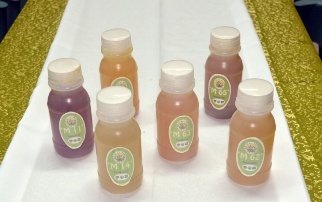 Researchers from the Central Luzon State University (CLSU) have found six plants possessing botanical pesticide or biopesticide properties, which can be an alternative to commercial pesticides.
Researchers from the Central Luzon State University (CLSU) have found six plants possessing botanical pesticide or biopesticide properties, which can be an alternative to commercial pesticides.
Botanical pesticide or biopesticide is a substance derived from plants capable of protecting selected crops against certain diseases and pests.
The team of researchers, led by its program leader, Dr. Paz-Alberto of the Institute of Climate Change and Environmental Management (ICCEM), has developed six biopesticides from plants collected in Region 3-Nueva Ecija, Bataan, and Aurora. These biopesticides have to be further studied, field tested, and patented prior to its promotion to the farmers.
Plant samples were collected from the forests in identified sites. These samples were screened to determine whether they have potential as biopesticide and later on processed into liquid biopesticide.
Dr. Ronaldo Alberto, the focal person of the project, explained that the biopesticides extracted can be applied to crops as a preventive or curative measure. However, the preventive approach is more effective based on their microplot trials on selected crops like tomato, pepper, bitter gourd, and onion.
The screening of indigenous plants as sources of biopesticides for vegetables, such as lettuce, cabbage, tomato, and sugarcane, is being done in Region 10. So far, 11 plant species with pesticidal properties have been collected and are undergoing tests to find out which can be used as biopesticides.
The biopesticides were developed under the Biodiversity Industry Strategic S&T Program (ISP) of the Philippine Council of Agriculture, Aquatic and Natural Resources Research and Development of the Department of Science and Technology (DOST-PCAARRD). It hopes to address the challenges in biodiversity through the assessment and conservation of critical biological diversity for ecosystem services and development of biodiversity-based products such as biopesticides, nutraceuticals, food, and novel products.
These biopesticides, along with the Council’s leading R&D initiatives in the agriculture, aquatic, and natural resources sectors, will be featured during the Super National Science and Technology Week (NSTW) on July 25-29 at the Council’s complex. This year’s NSTW adopts the theme, Juan Science, One Nation.
The Council will also celebrate its fifth anniversary on July 28, 2016. This will highlight the conduct of the National Symposium on Agriculture and Aquatic Resources Research and Development (NSAARRD) in the morning and awarding of papers in the afternoon. The NSAARRD showcases the most outstanding contributions of individuals and institutions in improving the state of the agriculture, aquatic, and natural resources sectors through research and development.
